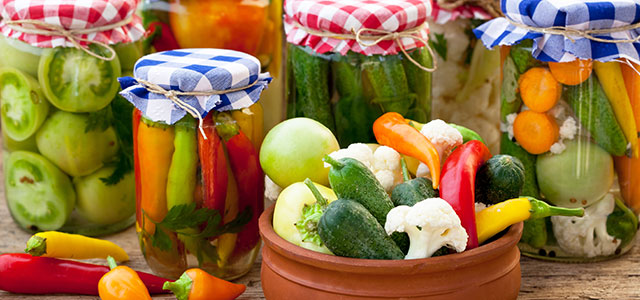What is fermentation and what’s it all about?

Are you a fan of seasonal vegetables but somehow find it difficult to store them? Then we have a tip for you: fermentation is a traditional method for preserving vegetables. It dates back to a time when people could not yet chill, transport and store raw foods effectively. Using fermentation, the nutritious and vitamin-rich vegetables available in abundance during the summer and autumn could be preserved and eaten right up until the following spring. But how healthy is fermentation? Unlike pickling, for example, which involves adding a lot of sugar to the vegetables to be preserved, the fermentation process only adds a certain amount of salt. Excluding the air creates an environment in which the lactic acid that occurs naturally in the vegetables starts the probiotic fermentation process and unwanted bacteria remain inactive. This so-called malolactic fermentation process and the omission of sugar makes fermentation a particularly healthy form of preservation. By the way, the German speciality sauerkraut is nothing more than fermented white cabbage. Now we will explain the basic principle behind the fermentation of vegetables like carrots and cabbage.
Fermentation: Two options
Dry fermentation and fermentation in brine
Vegetables with a high water content can be dry fermented. To do this, the vegetables are grated or finely chopped, rubbed vigorously with salt and placed in a dish. The salt extracts the water from the vegetables with the result that a brine surrounds the vegetables. Less watery vegetables, like pumpkin, carrots or beetroot, are not rubbed with salt but are placed in a container with a brine made from water and salt.
Excluding air from the fermentation process
If the vegetables are surrounded by brine in a preserving jar or another acid-resistant container, a one- to two-centimetre layer of brine should separate the vegetables from the air. This is important so that yeast bacteria in the air cannot reach the vegetables to be preserved and prevent the fermentation process. The container must not be airtight as it could explode due to the excess pressure that arises. After around five to ten days at room temperature, the vegetables develop the typical fermented tangy taste and the salt has been processed by the lactic acid bacteria. The preserving jar can now be sealed with a lid and stored in a cool, dark place – the vegetables can be preserved for several months.
Fancy experimenting with fermentation sometime? Click here for some delicious, autumnal inspiration!
Your Dole team

